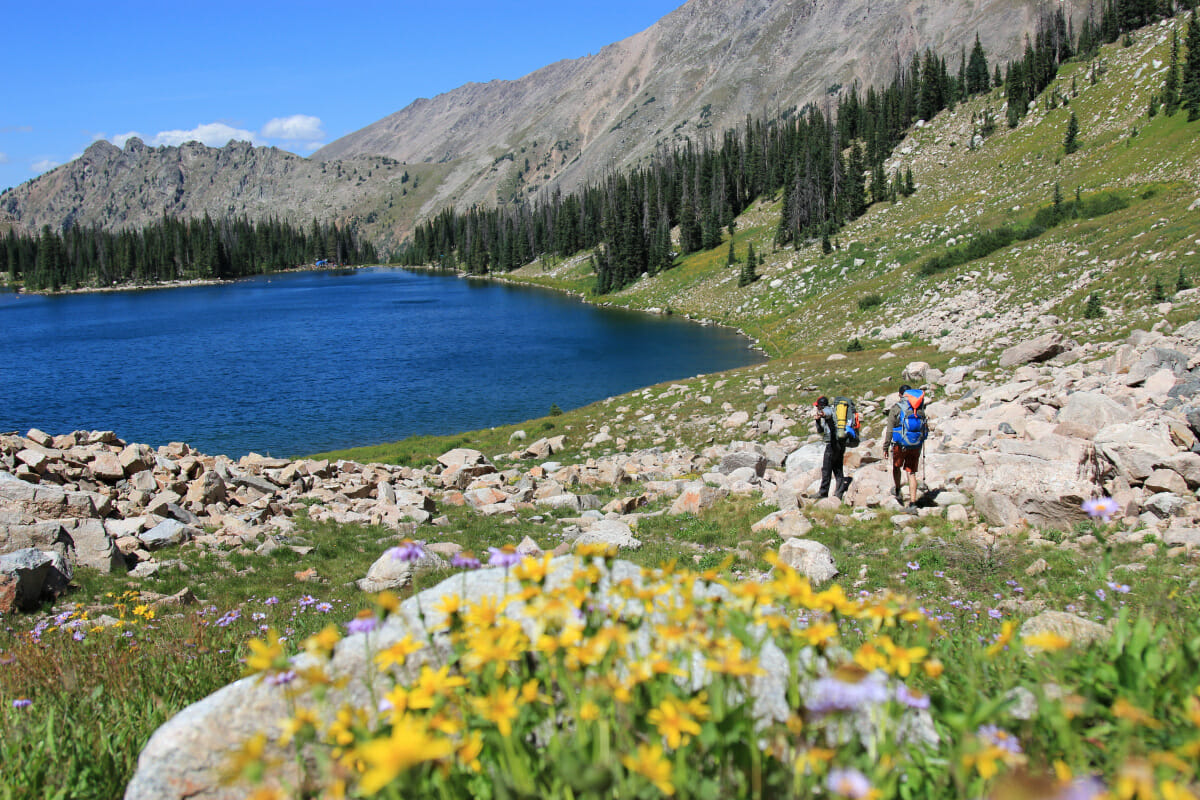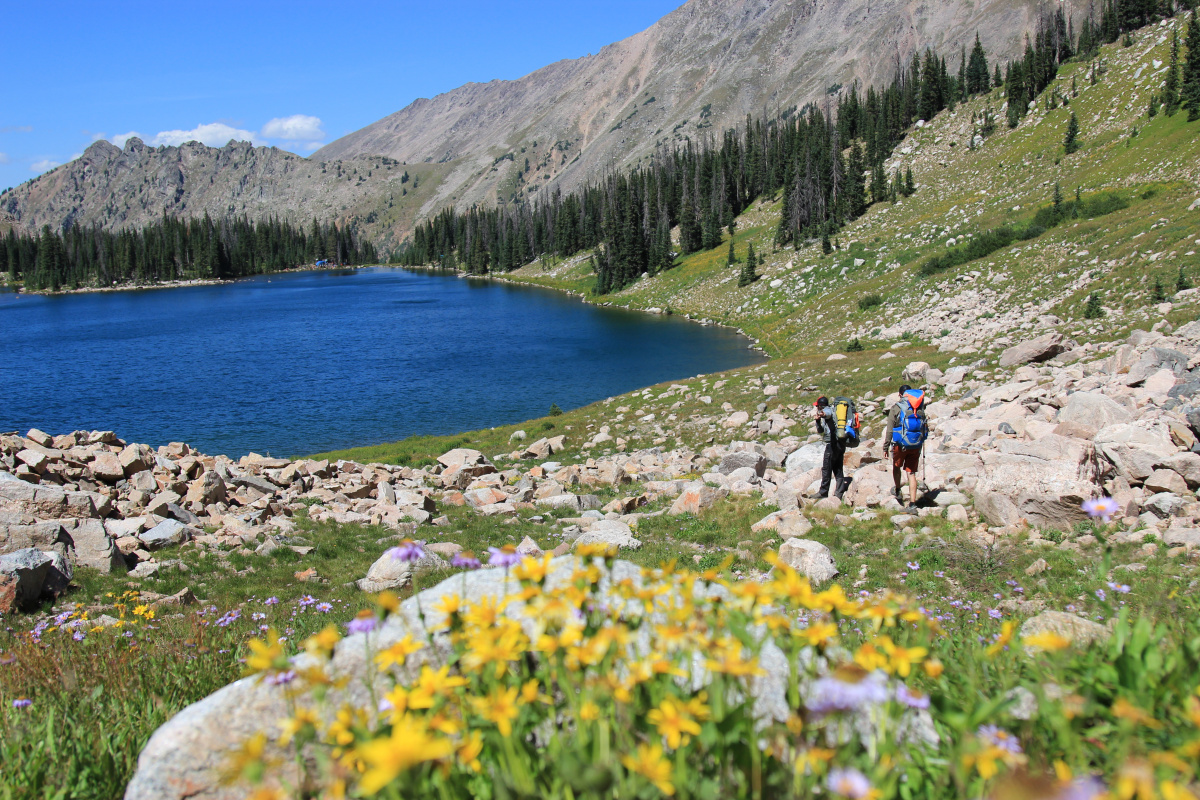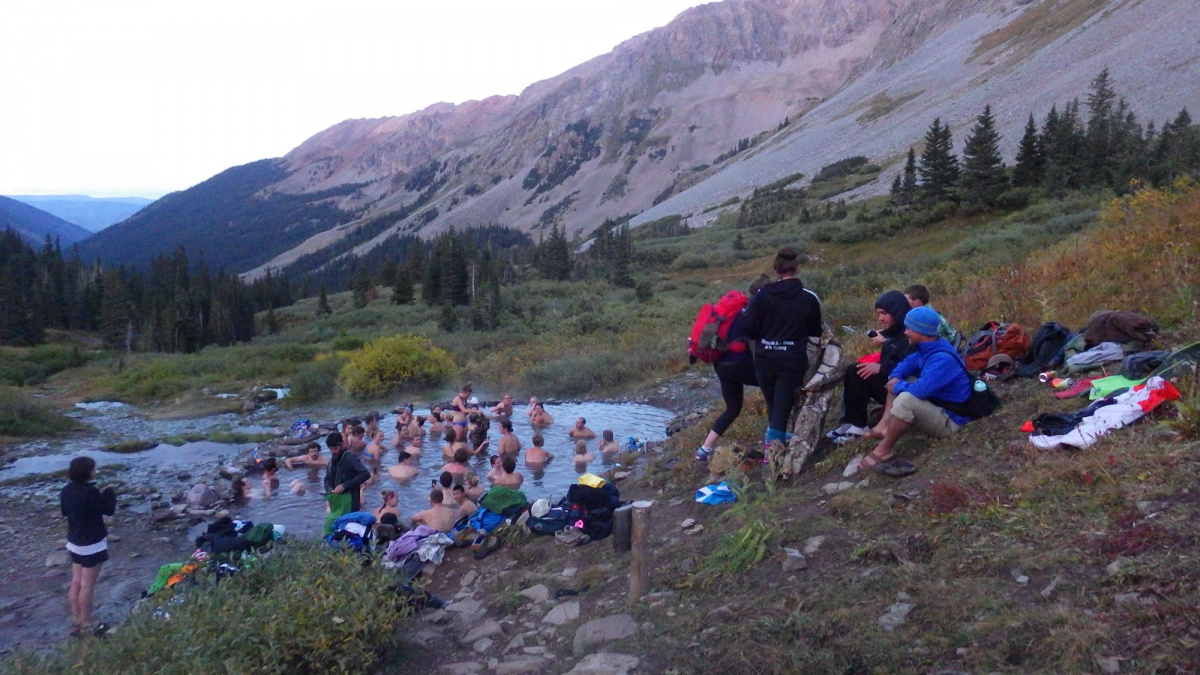Research & Education
Researchers Discover Traces of Pharmaceuticals and Other Contaminants in Colorado Backcountry Lakes


Denver, CO: Researchers from the United States Geological Survey in Colorado published new findings detailing the discovery of pharmaceuticals, hormones, pesticides, and other contaminants in both remote and accessible lakes of Rocky Mountain National Park. Common contaminants detected from water samples in this study were caffeine, camphor, para-cresol, and even DEET (the active ingredient in many insect repellents). While some of the contaminants discovered can be attributed to naturally occurring sources, other traces of pharmaceuticals, including oxycodone, are clearly a result of human input. These alarming findings are a wake-up call for all of us in the outdoor recreation community.

Photo: Contaminants linked to humans were found in remote Colorado lakes according to new research.
The Study
Between 2012 and 2013, researchers collected 67 water samples, 57 sediment samples, 63 fish samples, 10 frog tissue samples, and 12 quality-control samples. This array of samples was collected from 20 different locations across Rocky Mountain National Park. Once obtained, the samples were analyzed for an astounding 349 different parameters, including tests for 149 pharmaceuticals, 22 hormones, 137 pesticides, and 61 other chemicals or wastewater conditions. Findings detected 29 different pharmaceuticals, 9 hormones, 8 pesticides, and 27 wastewater indicators. The most commonly occurring contaminants were caffeine, camphor, para-cresol, and DEET.
Perhaps most interesting from a Leave No Trace perspective, is that most of the pharmaceuticals detected are excreted primarily through our urine, rather than our feces. These pharmaceuticals were represented by stimulants including caffeine and nicotine, pain relievers like ibuprofen, oxycodone, and phenobarbital, antidepressants, and heart, lung, and diabetes medications.
Of the 8 pesticides found in the study, many are thought to have arrived through atmospheric deposition, meaning that prevailing winds carry these contaminants from outside of the park, where they are deposited on soils and surfaces waters. However, the presence of DEET in 23 of the water samples points to our human recreation as another contributing factor for the introduction of pesticides. While the concentrations of DEET detected in this study aren’t thought to be toxic to aquatic life, the presence alone serves as a call to action for all park visitors.
While no individual contaminant detected in this study was present at high enough levels to have direct negative consequences on aquatic ecosystems, the cumulative effects of multiple different contaminants are thought to create negative impacts on aquatic life.

Pictured Above: Conundrum Hot Springs in Colorado shares these concerns about human waste.
What this Means for Leave No Trace
The discovery of pharmaceuticals, hormones, pesticides, and other contaminants in remote waters is alarming, and the lakes of Rocky Mountain National Park aren’t likely to be alone in this category. Many of the contaminants detected in this study can be traced directly to humans. While not ideal, the silver lining is that we have an opportunity as humans to reduce these impacts to water sources through our choices in the backcountry. Here are several easy choices you can make on your next outdoor adventure to help keep our precious water sources pristine:
- Camp 200 Feet (70 big steps) away from water sources: When we park our tents immediately next to a water source, we increase the likelihood that our contaminants like soap, food scraps, sunscreen, bug spray, urine, and poop end up in that water source. When nature calls in the middle of the night, campers sleeping right next to the lake aren’t likely to walk 200 feet away to urinate. Instead, choose a campsite 70 big steps away from water to prevent our contaminants from reaching that water source.
- Lather, Rinse, Repeat does not apply to alpine lakes: We all love swimming in clear, cool lakes during the heat of the summer. Before you take the plunge, avoid lathering up in sunscreen and bug spray. If you’re worried about residue from an earlier application, gather a small amount of water, walk 70 big steps away from the water source, and give yourself a quick rinse before taking the bigger plunge in to the lake.
- Urinate and Poop 200 feet (70 big steps) away from water: Many of us have been taught to dig our hole for poop well away from water sources, but often times urine isn’t considered in this recommendation. The results of this study suggest that we need to take equal care in distancing both our urine and our poop from water sources. Urinating directly in water sources like alpine lakes and streams is never in style. Go the extra distance necessary to ensure that your urine doesn’t end up in any water source.
- Go Before You Go: If restroom facilities are available at the trailhead or visitor center, use them before embarking on your hike or overnight trip to minimize the amount of human waste you may leave behind in the backcountry.
While the results of this study are alarming, we’re hoping this alarm serves as an important reminder to all hikers, backpackers, equestrian users, anglers, climbers, and other outdoor enthusiasts to protect the places we love through simple choices.
Enjoy Your World and Leave No Trace.
Leave No Trace’s Donielle Stevens and Aaron Hussmann are part of the 2018 Subaru/Leave No Trace Traveling Trainer Program that provides free, mobile education to communities across the country. Proud partners of this program include Subaru of America, REI, Eagles Nest Outfitters, Deuter, Thule, Taxa, and Klean Kanteen.
Source:
Battaglin, W. A., Bradley, P. M., Iwanowicz, L., Journey, C. A., Walsh, H. L., & Blazer, V. S. (2018). Pharmaceuticals, hormones, pesticides, and other bioactive contaminants in water, sediment, and tissue from Rocky Mountain National Park, 2012–2013. Science of the Total Environment,643, 651-673. doi:https://doi.org/10.1016/j.scitotenv.2018.06.150
Let’s protect and enjoy our natural world together
Get the latest in Leave No Trace eNews in your inbox so you can stay informed and involved.
